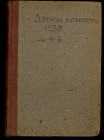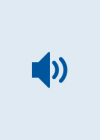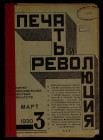Vladimir Mayakovsky (1893–1930)
The collection is timed to coincide with 125th anniversary of the birth of Vladimir Mayakovsky – one of the greatest poets-pioneers, who in many ways determined the style of the poetry of 20th century. Vladimir Mayakovsky was an outstanding and versatile figure: an artist, a playwright and a director.
Acquaintance and friendship with David Burliuk in his youth led him to the Cubo-Futurism union and marked the beginning of his poetic career. The first published poem by Mayakovsky was included in the futuristic collection “Slap in the Face to the Public Taste” and was characterized by very vivid metaphors, almost tangible images and an original style. This is a distinctive feature of the poet’s oeuvre.
Theories of industrial art, social order, factual literature, which the poet followed later, resulted in the birth of Mayakovsky’s peculiar, innovative style of writing - "ladder" writing. Reason for line breaks - a more precise shaping of the verse rhythm. The line is printed with breaks to indicate into which units it is necessary to divide while reading. The intonation of the verse is produced by typographical means.
The collection features digital copies of the poet’s first editions: the tragedy “Vladimir Mayakovsky” (1913), which came out in 1914, the first edition of the play “The Mystery-Bouffe”, written to mark the anniversary of the October Revolution, the poet’s collection of works – “All Writings of Vladimir Mayakovsky. 1909-1919”. The collection contains poet’s satirical works, in particular, an example of social advertising – the pamphlet "No more hooch!", "Mayakovsky mocks: the first book of satire", as well as a magazine edition of the faerie comedy "The Bedbug". Agitation and satirical posters ("ROSTA posters"), the result of cooperation between the poet and artist Mayakovsky and the Russian Telegraph Agency (1919-1921), are represented in the collection by a digital copy of the 1932 edition.
A total of 39 items make up the collection.
The collection is based on the documents, books and visual materials from the holdings of the Herzen Russian State Pedagogical University Fundamental Library, the Russian Institute of Art History, the Children's Postcard Museum, the Ural Federal University Regional Research Library and other sources.
- Life and career of Vladimir Mayakovsky
- Poet’s collected works
All composed by Vladimir Mayakovsky. 1909-1919
Mayakovsky, Vladimir Vladimirovich (1893-1930). All composed by Vladimir Mayakovsky. 1909-1919. [Petrograd]: The 18th State. type., [1919].255 pages of Mayakovsky. Book. 1
Mayakovsky. Vladimir Vladimirovich. 1893-1930. 255 pages of Mayakovsky. Moscow: State Publishing House, 1923; Petrograd.
Book. 1. 1923. - Poems
Heroes and victims of the revolution
Герои и жертвы революции. Петроград : Отдел изобразительных искусств Комитета народного просвещения, 1918.Mayakovsky mocks
Mayakovsky, Vladimir Vladimirovich (1893-1930). Mayakovsky mocks. Moscow: VKHUTEMAS, 1922.There's moonshine!
Mayakovsky, Vladimir Vladimirovich (1893-1930). There's moonshine !. Moscow: Red Nova, 1923.Young guard. G. 8, 1929, No. 14 (July)
Young guard. Moscow, 1922-.
G. 8 of 1929, No. 14 (July). 1929.The song of the pilots
White, Victor Arkadevich (1904-1983). The song of pilots. Moscow: Gos. muses. publishing house, 1931.Terrible laughter. Growth Windows
Mayakovsky, Vladimir Vladimirovich (1893-1930). Terrible laughter. Windows of Growth. Moscow: State Publishing House of Fiction, 1932; Leningrad.Banner. D. 4 19234, No. 5
Banner. Moscow, 1933-.
G. 4 19234, No. 5. 1934.Contents: V. Mayakovsky. May First; Two Mays: Poems. P. 85-90 [scans 89-94].
Mayakovsky is smiling. Mayakovsky laughs. Mayakovsky mocks
Mayakovsky, Vladimir Vladimirovich (1893-1930). Mayakovsky is smiling. Mayakovsky laughs. Mayakovsky mocks. Moscow: State Publishing House "Fiction", 1936.Banner. G. 6 1936, book. 2
Banner. Moscow, 1933-.
G. 6 1936, book. 2. 1936.Contents: V. Mayakovsky. Avio-poems. P. 3-10 [scans 7-14].
Our country. 1940, No. 4/5
Our country. Moscow: Journal and News Association, 1937-1941.
1940, No. 4/5. 1940.Contents: V.V. Mayakovsky. Vladimir Ilyich. Poems. P. 3 [scan 7].
For the power of the Soviets!
For the power of the Soviets !. [Moscow]: Gospolitizdat, 1957.Доступно только в Электронных читальных залах - Narrative poems
Chronicle. 1917, No. 7/8
Chronicle. Petrograd, 1915-1917.
1917, No. 7/8. 1917.Contents: V. Mayakovsky. The War and the World: A Poem. P. 7-9 [scans 13-14].
- Illustrations for the narrative poem “Vladimir Ilyich Lenin”
DS Bisti. Illustration for Vladimir Mayakovsky's poem "Vladimir Ilyich Lenin"
DS Bisti. Illustration for Vladimir Mayakovsky's poem "Vladimir Ilyich Lenin".From the poem by V. Mayakovsky "Vladimir Ilyich Lenin"
From the poem by V. Mayakovsky "Vladimir Ilyich Lenin." - Plays
Vladimir Mayakovsky
Mayakovsky, Vladimir Vladimirovich (1893-1930). Vladimir Mayakovsky. Moscow: Typo-lit. t / d IN Gryzunov and Co., 1914.Mystery Buff
Mayakovsky, Vladimir Vladimirovich (1893-1930). Misteria-Buff. Petrograd: IMO, 1918.The first edition of the play.
Young guard. G. 8, 1929, No. 3 (February)
Young guard. Moscow, 1922-.
G. 8 of 1929, No. 3 (February). 1929.Contents: V. Mayakovsky. The Bedbug: A Faerie Comedy. P. 2-17 [scans 6-21].
Young guard. G. 8 of 1929, No. 4 (February)
Young guard. Moscow, 1922-.
G. 8 of 1929, No. 4 (February). 1929.Contents: V. Mayakovsky. The Bedbug: A Faerie Comedy: (Conclusion). P. 2-17 [scans 2-17].
Bug
Mayakovsky, Vladimir Vladimirovich (1893-1930). Bug. Leningrad: Art. Leningrad Branch, 1974. - Publicistic essays
Three speeches
Mayakovsky, Vladimir Vladimirovich (1893-1930). Three speeches. [Moscow]: OGIZ, 1931.
- Works about the poet’s life and career
- General section
Cattail and link. 1931, Book. 4 (77)
Cattail and link. Moscow: All-Union Society of Political Captains and Exiles, 1921-1935. Film 1931, Book. 4 (77). 1931.Contents: G. I. Lourie. To the biography of V. V. Mayakovsky. P. 63-84 [scans 67-88].
Children's literature. 1939, No. 4
Critical-bibliographic research institute. (Moscow). Children's literature. Moscow, 1932-1941, 1965- [between 2005 and 2010].
1939, No. 4. 1939.Contents:. M. Levin. Mayakovsky and Children; F. Ebin. From Mayakovsky’s notebook. P. 11-18 [scans 16-23].
Red librarian. 1940, No. 2
Red librarian. Moscow, 1923-1941.
1940, No. 2. 1940.Contents: A. Yezerskaya. Mayakovsky in libraries. P. 3-16 [scans 5-18].
Mayakovsky is a patriot
Pertsov, Victor Osipovich. Mayakovsky is a patriot. Moscow: publishing house of the USSR Academy of Sciences, 1941.Statement by Mikhail Dudin, dedicated to Vladimir Mayakovsky
Frolov, Matthew L. (radiojournalist; 1914-1995).Statement by Mikhail Dudin, dedicated to Vladimir Mayakovsky.[Leningrad, 1970.].A speech by the poet, Hero of Socialist Labour Mikhail Alexandrovich Dudin, devoted to Vladimir Mayakovsky's poetry
- Language and style of Vladimir Mayakovsky’s works
Russian language at school. G. 3 1938, [No.] 3
Russian language at school. Moscow, 1936-.
G. 3 of 1938, [No.] 3. 1938.Contents: M. A. Shvetsova. The language and style of Mayakovsky’s poem “Vladimir Ilyich Lenin”. P 28-34 (scans 30-
- Abstracts of theses
Creativity of Vladimir Mayakovsky in literature and criticism of Sweden
Abramova, Oksana Gennadievna (teacher, Swedish language). Creativity of Vladimir Mayakovsky in literature and criticism of Sweden. Voronezh, 2013.Transformation of folklore tradition in Russian poetry of the beginning of the XX century (SA Esenin and VV Mayakovsky)
Galieva, Marianna Andreevna (Candidate of Philology). Transformation of folklore tradition in Russian poetry of the beginning of the XX century (SA Yesenin and VV Mayakovsky). Moscow, 2016.Intonational and kinetic means of transmitting emotional information and their verbal correlates
Demchenko, Yuri Olegovich (Candidate of Philology). Intonational and kinetic means of transmission of emotional information and their verbal correlates. Moscow, 2010.Comparison in poetic idiostyle
Dreisavi Hussein Kadim Majdi (Candidate of Philology). Comparison in poetic idiostyle. Voronezh, 2014.Textualization of corporeality in post-revolutionary poems by VV Mayakovsky
Komarov, Konstantin Markovich (candidate of philological sciences, 1988-). Textualization of corporeality in post-revolutionary poems by VV Mayakovsky. Yekaterinburg, 2014.Agitational and advertising functionalization post-October creativity VV Mayakovsky in the light of his zhiznetvorchestva and zhiznostroeniya
Matrosova, Elena Sergeevna (candidate of philological sciences). Agitational and advertising functionalization post-October creativity VV Mayakovsky in the light of his zhiznetvorchestva and zhiznostroeniya. Ivanovo, 2014.Space and time in the artistic world of VV Mayakovsky
Yurasova, Nadezhda Gennadievna (candidate of philological sciences). Space and time in the artistic world of VV Mayakovsky. Nizhny Novgorod, 2008.
- Memory of the poet
- Obituary notices regarding the death of Vladimir Mayakovsky
Print and revolution. 1930, No. 3 (March)
Print and revolution. Moscow: State Publishing House, 1921-1930.
1930, No. 3 (March). 1930.Contents: Headline. Obituary of V. Mayakovsky; Poet of the Revolution; I. Bespalov. The Way of Mayakovsky; M. Gelfand. The Main Points in Mayakovsky’s Image. P. 2-11 [scans 8-17].
- Monuments to the poet
Moscow. Monument to VV Mayakovsky in Mayakovsky Square. Sculptor A. Kibalnikov. Left: the building of the Tchaikovsky Concert Hall
Moscow. Monument to VV Mayakovsky in Mayakovsky Square. Sculptor A. Kibalnikov. To the left is the building of the Tchaikovsky Concert Hall.Novosibirsk. Cinema them. Mayakovsky
Shubin, G.V. Novosibirsk. Cinema them. Mayakovsky.Moscow. Monument to VV Mayakovsky (sculptor A. Kibalnikov)
Moscow. Monument to VV Mayakovsky (sculptor A. Kibalnikov). - Sculpture portrait of Vladimir Mayakovsky
Portrait Of Vladimir Mayakovsky. Sculptor A. Charkin
Portrait Of Vladimir Mayakovsky. Sculptor A. Charkin. [Leningrad, 1986]. - Poet’s personal belongings
Moscow. The State Library-Museum of VV Mayakovsky. The desk in the office of V. Mayakovsky
Moscow. The State Library-Museum of VV Mayakovsky. A desk in the office of V. Mayakovsky.












































Contents: V. Mayakovsky. Out of Sight: Poems. P. 35 [scan 35].